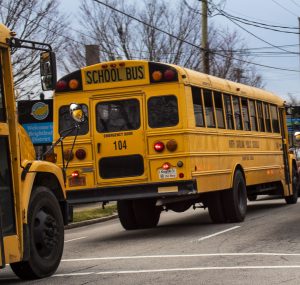Durham school leaders will catalogue the district’s most pressing building maintenance needs and spend more than $2 million in federal funds for HVAC and other building repairs, the interim superintendent said Thursday.
However, district leaders said more money will be needed to tackle school building maintenance problems.
During a school board work session Thursday, Interim Superintendent Catty Moore said she has asked Fredrick Davis, the district’s senior executive director of building services, to list the system’s most pressing “deferred maintenance” needs and provide cost estimates for those items.
The district will also devote more than $2 million in federal funds to the maintenance problems. The federal dollars are part of the district’s remaining American Rescue Plan funds, issued during the COVID pandemic. The funds expire at the end of September.
The actions come on the heels of complaints by parents about conditions at local schools. DPS parents have voiced worries about leaky roofs, faltering HVAC systems, and mold in schools — among other building maintenance issues.
Board member Natalie Beyer acknowledged that board members have received complaints regarding failing HVAC systems and other building repair needs across the district.
“[I] hope that we can really identify and target these $2 million to further stretch those overdue repairs across the district,” she said.
Chair Bettina Umstead further emphasized problems with HVAC systems, noting that some year-round schools start back to school in July.
“How do we make sure those schools and those HVAC systems are ready to manage in an increasingly warming climate? Umstead said.
“We know that it’s getting hotter and hotter, so how do we make sure those places are ready to go? I know that it’s been really challenging for our schools over the last couple days who have been dealing with HVAC challenges.”
In addition to the federal funds, the district requested more money for building maintenance in its recent budget request to county commissioners.
However, district officials said that those combined dollars will fall short of the need. “Upwards of $10 million” is needed to address deferred maintenance issues at school system buildings, said Larry Johnson, the school system’s chief operating officer.
Moore and Beyer acknowledged that paying for the needed building repairs — both immediate tasks and annual upkeep — could be a challenge.
“We probably should’ve asked for double the operations recurring funds that we have to keep up with this as these federal funds go away,” Beyer said.
Moore agreed. But she noted that the budget request had to balance several needs, including the need to fund worker raises.
“It was really a minimum of $4 million that we needed [for building repairs],” she said.
The board also recently hired an outside contractor to assess school district building conditions, at a cost of $1.7 million. Moore said that report will be complete by the end of the summer. Larry Johnson, chief operating officer of DPS, said the assessment will focus on long-term needs, not immediate repairs.
A focus on budgets comes after a turbulent year for the school system. In the fall, the district gave raises to classified workers, then withdrew the raises when board members discovered the cost was millions over the district’s budget. The snafu led to protests and school closures, with the board ultimately approving more modest raises for workers.
The board also heard a presentation about future building needs. Mathew Palmer, senior executive director of school planning and operational services, said the district can anticipate an additional 4,800 students by 2033-2034, based upon expected new housing developments.
Palmer noted that new development is not occurring evenly across Durham County, but instead is clustered largely in eastern and southeastern Durham, putting pressure on schools in that area. Each new DPS seat costs the district roughly $100,000, he said.
Palmer said the district will need to consider both “the need for more seats, as well as suitable learning environments.”
“You’ve heard the concerns with the existing conditions of our facilities,” Palmer said. “We’re going to have to chew gum and walk at the same time. We’re going to have to patch holes when we build new roads.”


